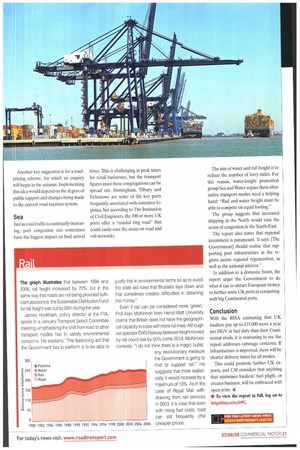The graph illustrates that between 1994 and 2006, rail freight
Page 21

If you've noticed an error in this article please click here to report it so we can fix it.
increased by 70%, but in the same way that roads are not being provided suff dent assistance, the Sustainable Distribution Fund for rail freight was cut by £6m cluing the year.
James Hookham, policy director at the FTA, spoke in a January Transport Select Committee meeting, emphasising the shift from road to other transport modes has to satisfy environmental concerns. He explains: The balancing act that the Government has to perform is to be able to justify this in environmental terms so as to avoid the state aid rules that Brussels lays down and that sometimes creates difficulties in obtaining the money."
Even if rail can be considered more 'green,' Prof Alan McKinnon from Heriot-Watt University claims that Britain does not have the geographical capacity to cope with more rail lines. Although rail operator EWS Railway believes freight moved by rail could rise by 50% come 2014, McKinnon contests: "I do not think there is a magic bullet, any revolutionary measure the Government is going to find to support rail." He suggests that more realistically, it would increase by a maximum of 13%. As in the case of Royal Mail withdrawing from rail services in 2003, it is clear that even with rising fuel costs, road can still frequently offer


























































































































































